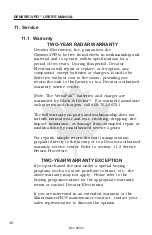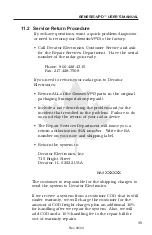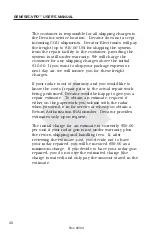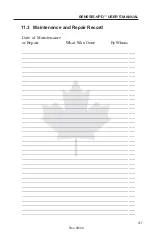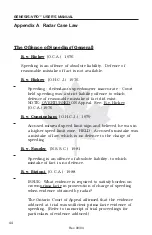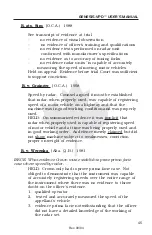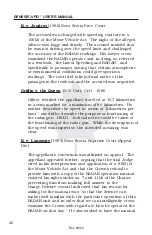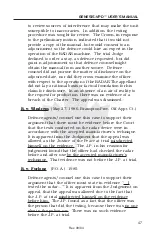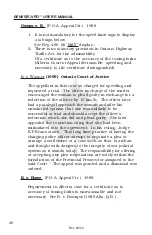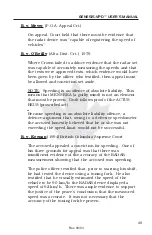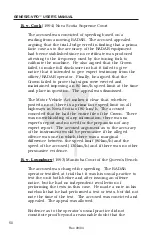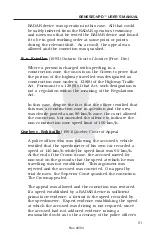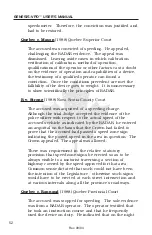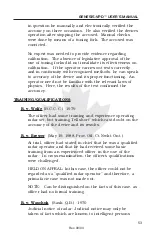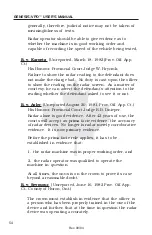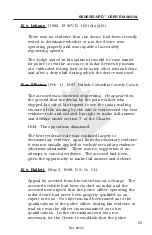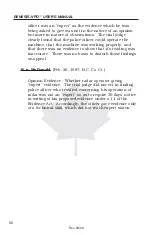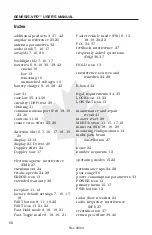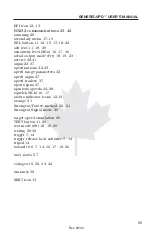
GENESIS-VPD™ USER’S MANUAL
52
Rev. 09/04
speedometer. Therefore, the conviction was justified and
had to be restored.
Quebec c. Mason
(1988) Quebec Superior Court
The accused was convicted of speeding. He appealed,
challenging the RADAR evidence. The appeal was
dismissed. Leaving aside cases in which calibration,
verification of calibration, method of operation,
qualifications of the operator or other factors cast a doubt
on the evidence of operation and capabilities of a device,
the testimony of a qualified operator can found a
conviction. Once the conditions precedent are met the
fallibility of the device goes to weight. It is unnecessary
to show scientifically the principles of RADAR.
R v. Strong
(1988) Nova Scotia County Court
The accused was acquitted of a speeding charge.
Although the trial Judge accepted the evidence of the
police officer with respect to the actual speed of the
accused’s vehicle as indicated by the RADAR, he entered
an acquittal on the basis that the Crown had failed to
prove that the accused had passed a speed zone sign
indicating the posted speed in the area in question. The
Crown appealed. The appeal was allowed.
There was requirement in the relative statutory
provision that speed zone signs be erected so as to be
always visible to a motorist traversing a section of
highway covered by the speed approved for that area.
Common sense dictated that such could not have been
the intention of the Legislature - otherwise such signs
would have to be erected at each street intersection and
at various intervals along all the province’s roadways.
Quebec c. Rannaud
(1988) Quebec Provincial Court
The accused was stopped for speeding. The sole evidence
was from a RADAR operator. The operator testified that
he took an instruction course and that he frequently
used the device on duty. He indicated that on the night

